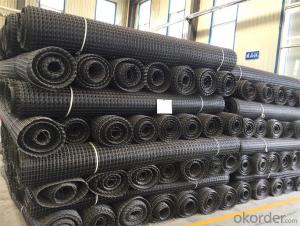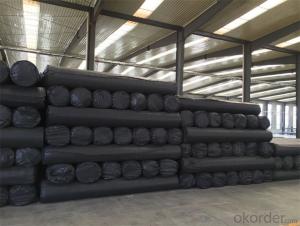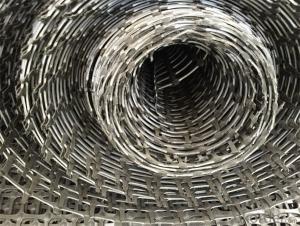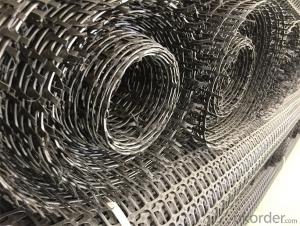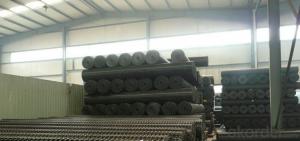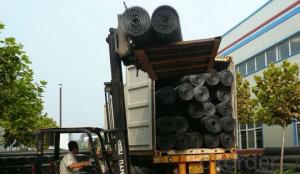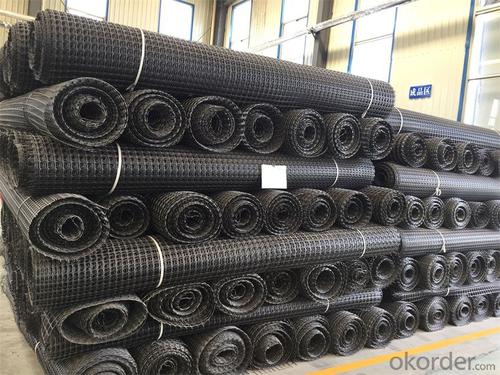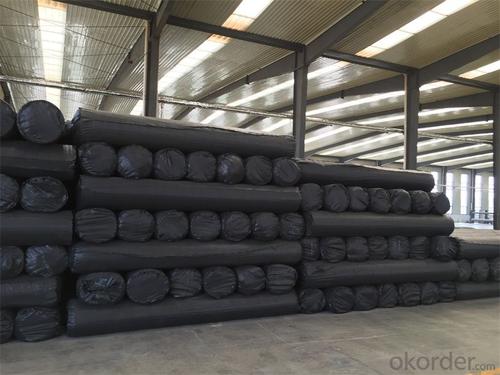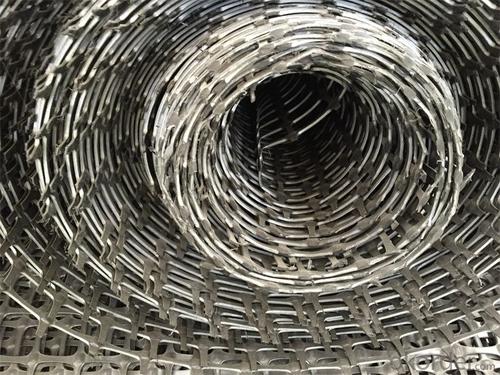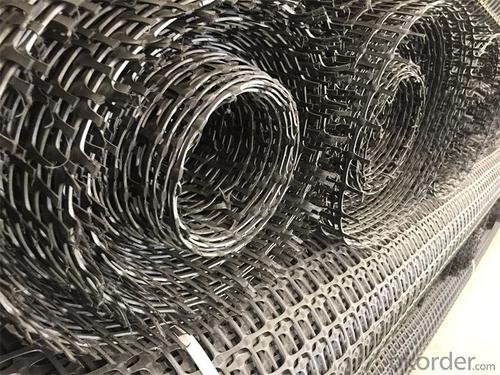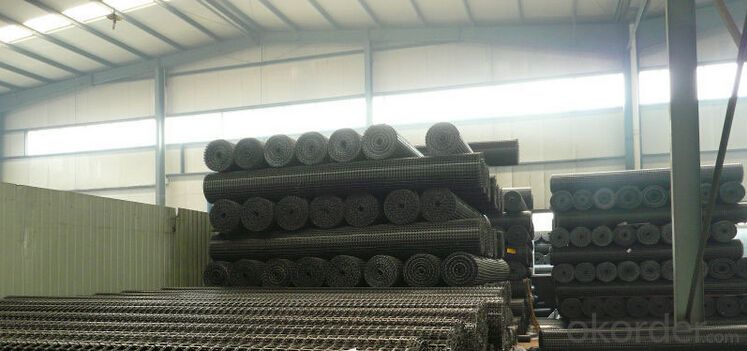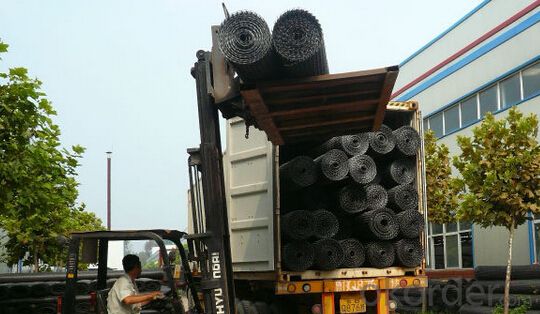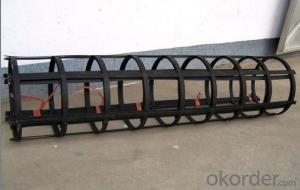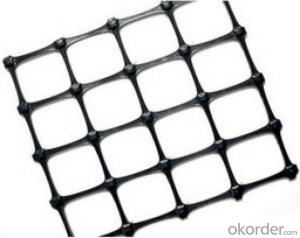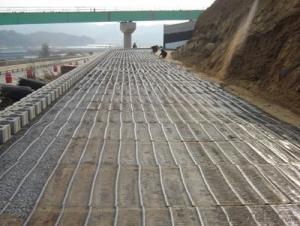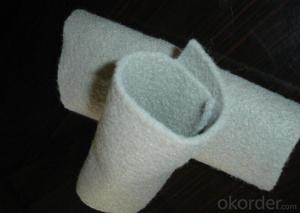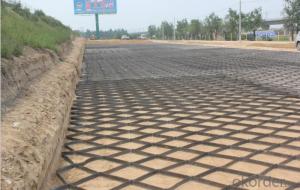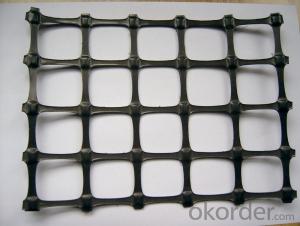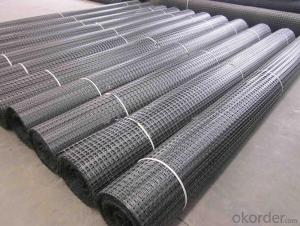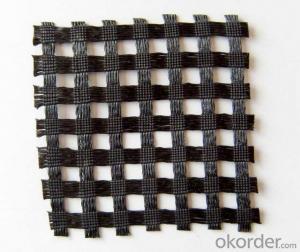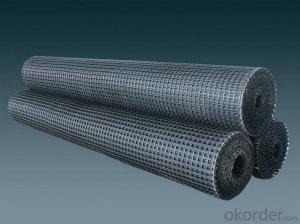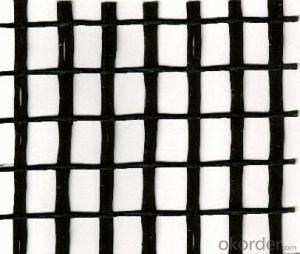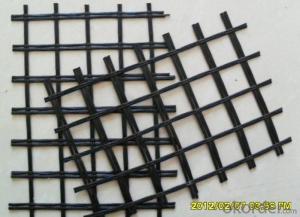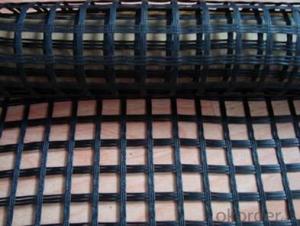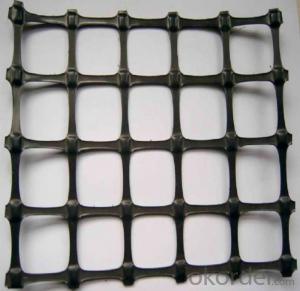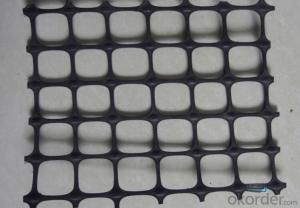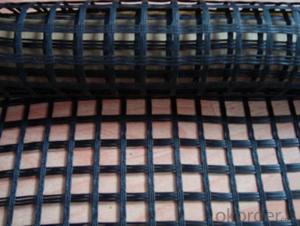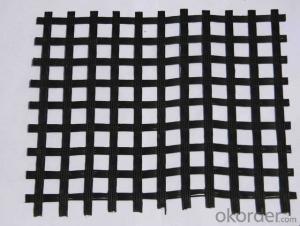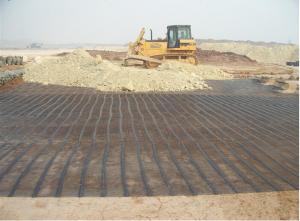Triax Geogrids Fiberglass Geogrid with CE Certificates
- Loading Port:
- Qingdao
- Payment Terms:
- TT OR LC
- Min Order Qty:
- 5000 m²
- Supply Capability:
- 2000000 m²/month
OKorder Service Pledge
OKorder Financial Service
You Might Also Like
Specifications of Geogrid:
Glassfiber Geogrid(Fiberglass geogrid)
1.Reinforcement fiberglss geogrid
2.made of fiberglass,glassfiber
3.fiber glass mesh
Applications of Geogrid:
Make reinforce treatment for various kinds of soft soil foundation to evenly distribute load stress and reduce uneven settlement, not easy to generate static electricity, and flammability property good in the coal mine. It is easy to wash coal.
Used in highway, railway, port, airport and municipal project. Support in the recovery working face of coal mine and roadway in the coal mine.
Index Properties | Test Method | Unit | GG1515 | GG2020 | GG3030 | GG4040 |
MD TD | MD TD | MD TD | MD TD | |||
Polymer | -- | -- | PP | PP | PP | PP |
Minimum Carbon Black | ASTM D 4218 | % | 2 | 2 | 2 | 2 |
Tensile Strength@ 2% Strain | ASTM D 6637 | Kn/m | 5 5 | 7 7 | 10.5 10.5 | 14 14 |
Tensile Strength@ 5% Strain | ASTM D 6637 | Kn/m | 7 7 | 14 14 | 21 21 | 28 28 |
Ultimate Tensile Strength | ASTM D 6637 | Kn/m | 15 15 | 20 20 | 30 30 | 40 40 |
Strain @ Ultimate Strength | ASTM D 6637 | % | 13 10 | 13 10 | 13 10 | 13 10 |
Structural Integrity | ||||||
Junction Efficiency | GRI GG2 | % | 93 | 93 | 93 | 93 |
Flexural Rigidity | ASTM D 1388 | Mg-cm | 700000 | 1000000 | 3500000 | 10000000 |
Aperture Stability | COE Method | mm-N/deg | 646 | 707 | 1432 | 2104 |
Dimensions | ||||||
Roll Width | -- | M | 3.95 | 3.95 | 3.95 | 3.95 |
Roll Length | -- | M | 50 | 50 | 50 | 50 |
Roll Weight | -- | Kg | 39 | 50 | 72 | 105 |
MD denotes Machine direction. TD denotes transverse direction. | ||||||
Property of Geogrid:
1.) Improve roadbed bearing capacity,enlarge road lifetime.
2.) Prevent road collapse and crack
3.) Prevent soil and water loss in slope
4.) Could replace steel-plastic geogrid in coal mine.
FAQ:
1. How to order your geogrid ?
a). Tensile strength in warp & weft direction
b). Grid size
c). Width and length
d). Quantity
2. Payment term .
a) TT
b) LC AT SIGHT
c) cash
d) 30% contact value as deposit ,the blance 70% be paid after received the copy of bl .
3. Delivery time
a) 19-25 days after received your depsit .
4. What is MQQ ?
a) 2500 m2 as MQQ , we can also produce sample for you .
Geogrid Show:
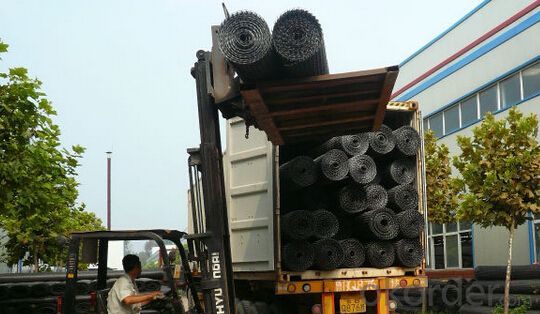
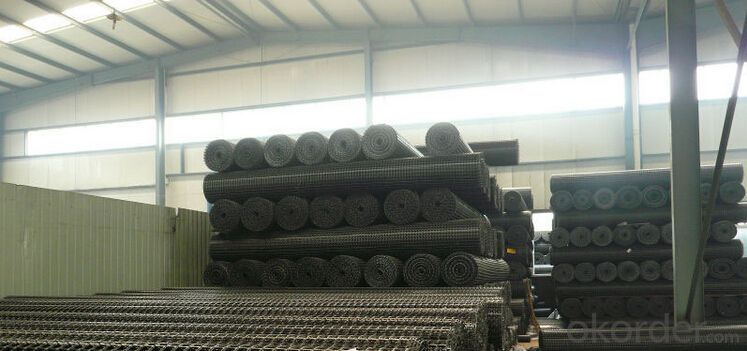
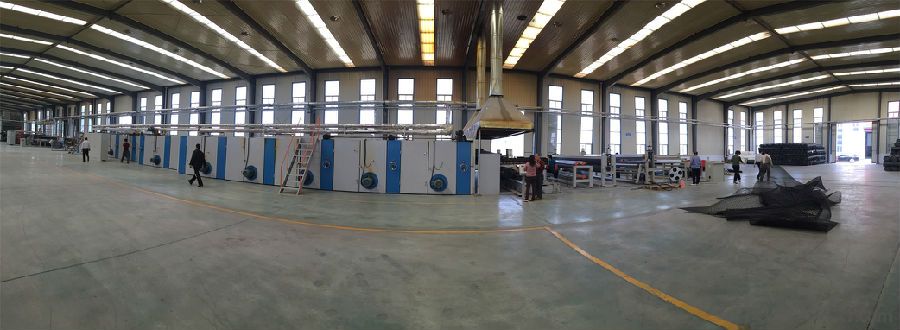
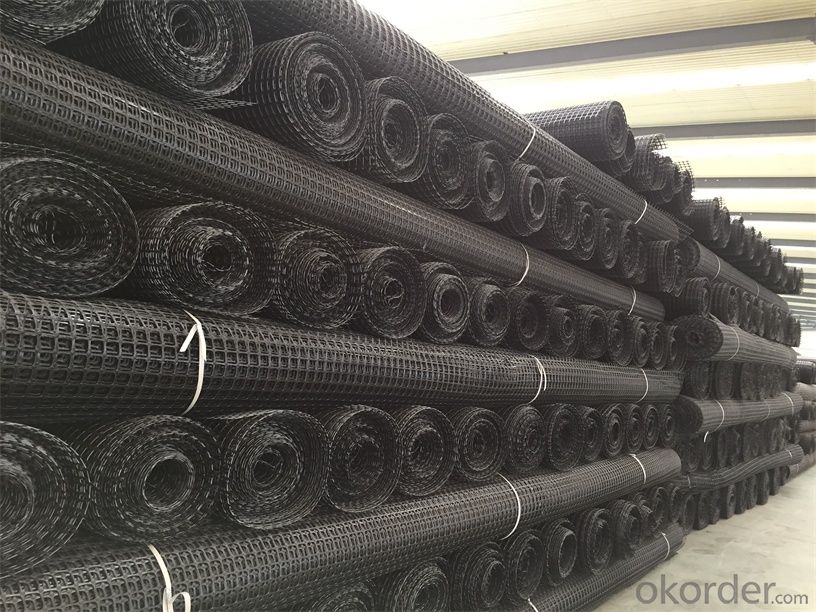
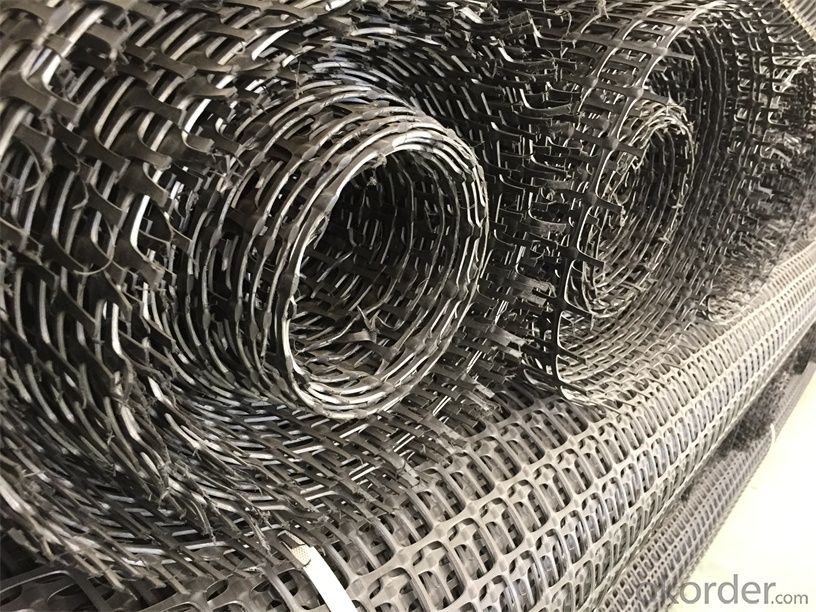
- Q: Can geogrids be used in environmental containment systems?
- Yes, geogrids can be used in environmental containment systems. Geogrids are commonly used to reinforce and stabilize earth structures such as slopes and retaining walls. In environmental containment systems, geogrids can be utilized to enhance the stability and strength of liners and barriers, preventing soil erosion and providing long-term durability. They can also improve the overall performance of containment systems by increasing their load-bearing capacity and reducing the potential for geotechnical failures.
- Q: What are the advantages of using geogrids in mechanically stabilized aggregate bases?
- Some advantages of using geogrids in mechanically stabilized aggregate bases include increased load-bearing capacity, improved stability and performance, reduced construction and maintenance costs, and enhanced longevity of the pavement structure. Geogrids distribute and restrain the applied loads more evenly, reducing the stress on the underlying soil and aggregate layers. This results in higher load-bearing capacity and improved resistance against settlement, rutting, and pavement deformation. Additionally, geogrids help in maintaining the integrity of the aggregate base by preventing lateral spreading and enhancing interlocking between the aggregate particles. The use of geogrids also reduces the amount of aggregate material required for construction, leading to cost savings. Moreover, the improved stability provided by geogrids can extend the lifespan of the pavement structure, reducing the need for frequent maintenance and repairs.
- Q: Are geogrids fire-resistant?
- No, geogrids are not fire-resistant.
- Q: Can geogrids be mechanically connected to other geosynthetics?
- Yes, geogrids can be mechanically connected to other geosynthetics through various methods such as stitching, welding, or using connector devices. These connections help enhance the overall performance and integrity of the geosynthetics system.
- Q: What is the role of geogrid?
- The geogrid in the highway is mainly used for soft foundation treatment, subgrade reinforcement, slope protection, abutment reinforcement, wing walls, retaining walls, isolation and reinforced soil engineering, highway, railway,.1, abutment approach, wharf, dams, slag field in soft soil foundation reinforcement, retaining wall and road surface crack engineering.2, in areas such as railway use of geogrid can avoid premature Railway on soft ground settlement and damage, 3 generation of geogrid used in embankment, dam, - River, canal, sea levee, reservoir reinforcement and other water conservancy projects 4, geogrid reinforced foundation can greatly improve the airport runway the carrying capacity, ensure aircraft safety 5, geogrid can be used for landfill site processing, power plant, ash dam project, coal mine, metallurgy, greening, fence and other areas 6, building structure of soft foundation reinforcement, improve the whole foundation Bearing capacity
- Q: Can geogrids be used in subgrade improvement?
- Yes, geogrids can be used in subgrade improvement. Geogrids are commonly used to reinforce weak or unstable soil in subgrade applications. They provide additional strength and stability to the soil, allowing for better load distribution and reducing settlement.
- Q: How to read geogrid grilleBe careful not to copy the dictionary. I want to know why he read it hereI look at the dictionary said: the gate of zhBlock made of bamboo, iron bars, etc.. barsIs it because geogrid can also be seen as a strip of things, so read Zha
- What dialect! Is Chinese
- Q: Can geogrids be used in floating parking lot construction?
- Yes, geogrids can be used in floating parking lot construction. Geogrids are commonly used to reinforce and stabilize soil and can be used as a base reinforcement material in floating parking lot construction to improve the load-bearing capacity and prevent soil erosion.
- Q: Can geogrids be used in stormwater management applications?
- Yes, geogrids can be used in stormwater management applications. Geogrids are commonly used to reinforce and stabilize soil in various construction projects, including stormwater management systems. They can be used to enhance the strength and stability of retaining walls, embankments, and slopes, which are essential components of stormwater management systems. Additionally, geogrids can help reduce soil erosion and improve drainage, making them a valuable tool in stormwater management.
- Q: Fiberglass grille price?
- Glass fiber geogrid, also known as fiberglass geogrid, fiberglass geogrid, is a kind of geogrid, mainly used for asphalt pavement, asphalt pavement to prevent cracks.
Send your message to us
Triax Geogrids Fiberglass Geogrid with CE Certificates
- Loading Port:
- Qingdao
- Payment Terms:
- TT OR LC
- Min Order Qty:
- 5000 m²
- Supply Capability:
- 2000000 m²/month
OKorder Service Pledge
OKorder Financial Service
Similar products
Hot products
Hot Searches
Related keywords
